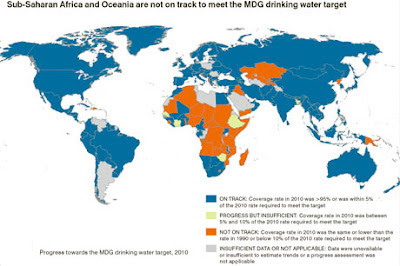Sometimes a challenge is overcome simply when the problem is defined differently - usually from a different perspective. Ongoing Climate Change research may guide us to efficiently extracting moisture from the air we breathe.
The Common Perspective on Climate Change - Cut Carbon Dioxide Emissions
To counter climate change, our overwhelming focus in every industry is on reducing addition of carbon dioxide into the atmosphere.
This reduction is achieved by "scrubbing" emissions to capture the carbon dioxide they contain.
Typically, the "scrubber" chemically removes carbon dioxide in the emission. When the scrubber eventually 'wears out, it is replaced with a new scrubber. The 'used up' scrubber is disposed or cleaned up and reused.
The extracted carbon dioxide can be stored or the carbon can be processed to create artificial fuels that supplement fossil fuels.
What if we supplemented our focus on only emission reduction with extraction of carbon dioxide that we have added into air?
An Uncommon Perspective - Pull Carbon Dioxide OUT from Air
This perspective acknowledges that we have put carbon dioxide into the air and defines the climate change challenge as one of taking carbon dioxide out of air.
Photosynthesis is nature's technique for extracting carbon dioxide from the air - a technique that is impractical for use by people because of the lead time required to seed, nurture and grow the number of plants required to c lean-up today's air.
So we are left with developing artificial techniques for pulling carbon dioxide out of the air. Furthermore, these extraction techniques have a value all their own, even when we reduce the additions: We need them to extract the carbon dioxide that we have already added into the air.
Three private companies seeking to develop a technically and economically viable process to take carbon dioxide out from air are Climeworks, Kilimanjaro Energy and Carbon Engineering.
Composition of Air
The air (in the troposphere) is composed of the following:
Source - http://www.lenntech.com
There is much much more water than carbon dioxide in the air!
Defining freshwater as a supply issue or a demand issue
So, how can we define the challenge of freshwater scarcity differently? One way is to see the glass half empty and reducing. Another way is to see the glass as half full and filling.
Extracting moisture from the air is an example of the latter approach. This approach has a lot in common with extracting nitrogen from the air to make artificial manure (fertilizer) responsible for feeding much of the world today. It also has a lot in common with extracting carbon dioxide from the air to curb climate change and its impacts.
 |
| Carbon Dioxide Emissions Source - scinewsblog.blogspot.com |
To counter climate change, our overwhelming focus in every industry is on reducing addition of carbon dioxide into the atmosphere.
This reduction is achieved by "scrubbing" emissions to capture the carbon dioxide they contain.
Typically, the "scrubber" chemically removes carbon dioxide in the emission. When the scrubber eventually 'wears out, it is replaced with a new scrubber. The 'used up' scrubber is disposed or cleaned up and reused.
The extracted carbon dioxide can be stored or the carbon can be processed to create artificial fuels that supplement fossil fuels.
What if we supplemented our focus on only emission reduction with extraction of carbon dioxide that we have added into air?
An Uncommon Perspective - Pull Carbon Dioxide OUT from Air
 |
| Photosynthesis Source - en.wikipedia.org |
 |
| Source - guardian.co.uk |
Photosynthesis is nature's technique for extracting carbon dioxide from the air - a technique that is impractical for use by people because of the lead time required to seed, nurture and grow the number of plants required to c lean-up today's air.
So we are left with developing artificial techniques for pulling carbon dioxide out of the air. Furthermore, these extraction techniques have a value all their own, even when we reduce the additions: We need them to extract the carbon dioxide that we have already added into the air.
Three private companies seeking to develop a technically and economically viable process to take carbon dioxide out from air are Climeworks, Kilimanjaro Energy and Carbon Engineering.
Composition of Air
The air (in the troposphere) is composed of the following:
| Nitrogen (N2) | 78% |
| Oxygen (O2) | 20% |
| Noble gasses | 1% |
| Carbon dioxide (CO2) | 0.03% |
| Water vapor (H2O) | 0.97% |
There is much much more water than carbon dioxide in the air!
Defining freshwater as a supply issue or a demand issue
So, how can we define the challenge of freshwater scarcity differently? One way is to see the glass half empty and reducing. Another way is to see the glass as half full and filling.
Extracting moisture from the air is an example of the latter approach. This approach has a lot in common with extracting nitrogen from the air to make artificial manure (fertilizer) responsible for feeding much of the world today. It also has a lot in common with extracting carbon dioxide from the air to curb climate change and its impacts.












